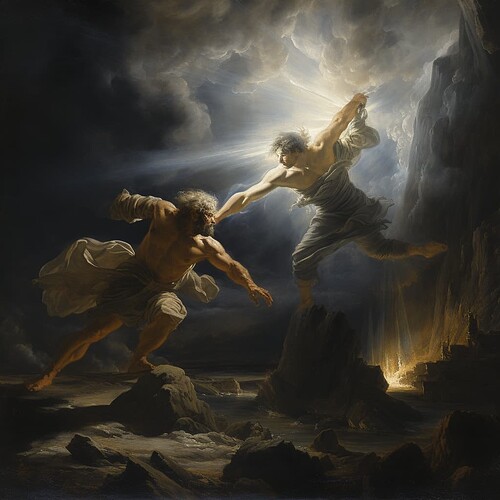![]() January 19: Genesis 32-33 - Jacob’s Transformation and Reconciliation
January 19: Genesis 32-33 - Jacob’s Transformation and Reconciliation
Embracing Change and Forgiveness in Our Spiritual Journey
 Introduction
Introduction
On January 19th, our reading journey takes us through Genesis 32-33, chapters that unfold the profound transformation of Jacob and his reconciliation with Esau. These passages offer deep insights into personal change and the power of forgiveness.
 Genesis 32: Jacob Wrestles with God
Genesis 32: Jacob Wrestles with God
Genesis 32 presents the iconic scene of Jacob wrestling with God. This transformative encounter not only changes Jacob’s name to Israel but also signifies his spiritual growth and struggle for a new identity.
Key Verse: “Your name will no longer be Jacob, but Israel, because you have struggled with God and with humans and have overcome.” — Genesis 32:28
 Genesis 33: Reconciliation with Esau
Genesis 33: Reconciliation with Esau
In Genesis 33, we witness the emotional reunion of Jacob and Esau, illustrating the healing power of forgiveness. This reconciliation marks a significant turning point in their lives, teaching us about letting go of past grievances.
Key Verse: “But Esau ran to meet Jacob and embraced him; he threw his arms around his neck and kissed him. And they wept.” — Genesis 33:4
 Key Themes and Reflections:
Key Themes and Reflections:
Transformation through Struggle: Jacob’s encounter with God is a vivid representation of personal struggles leading to transformation and renewal.
The Essence of Forgiveness: The reunion of Jacob and Esau shows the strength and humility needed for forgiveness and reconciliation.
Overcoming the Past: These chapters encourage us to confront our past, overcome our fears, and move forward with hope and faith.
 Today’s Application:
Today’s Application:
Contemplate the areas of your life where you may be wrestling with God and what transformations might emerge from these struggles. Reflect on relationships that may need forgiveness and healing, drawing inspiration from Jacob and Esau’s reunion.
 Hidden Gem:
Hidden Gem:
Did you know? Jacob’s limping after his encounter with God (Genesis 32:31) symbolizes both the cost and the blessing of his spiritual journey, reminding us that transformation often comes with challenges.
 Reflective Q&A:
Reflective Q&A:
![]() Genesis 32-33: Transformation and Reconciliation
Genesis 32-33: Transformation and Reconciliation
![]() Wrestling with God: How does Jacob’s struggle with God in Genesis 32 impact our understanding of spiritual growth and challenges?
Wrestling with God: How does Jacob’s struggle with God in Genesis 32 impact our understanding of spiritual growth and challenges?
A: Jacob’s struggle is a powerful metaphor for our own spiritual battles. It shows that growth often comes through challenging experiences and that these struggles can lead to significant transformations in our lives.
![]() The Power of Forgiveness: What lessons can we learn from the reconciliation of Jacob and Esau?
The Power of Forgiveness: What lessons can we learn from the reconciliation of Jacob and Esau?
A: The reunion of Jacob and Esau teaches us about the humility and courage required to seek forgiveness and the liberating power of letting go of past conflicts. It reminds us that reconciliation can bring healing and restoration.
 Join the Discussion:
Join the Discussion:
How do the themes of transformation and forgiveness in Genesis 32-33 resonate with you? Share your experiences and reflections on overcoming personal struggles and embracing forgiveness.
#Genesis32 #Jacob #Forgiveness #SpiritualGrowth #BibleStudy #JourneyThroughGenesis
![]() Tomorrow’s Exploration in Genesis: Continue with us on this enlightening journey through Genesis, uncovering more insights about faith, identity, and God’s plan.
Tomorrow’s Exploration in Genesis: Continue with us on this enlightening journey through Genesis, uncovering more insights about faith, identity, and God’s plan.
 Join the forum!
Join the forum!
Deepen your spiritual understanding with the AIgniteScripture Community:
Free Members: Engage in discussions and explore biblical resources. Join here: 🌟 How to Join Page - Membership Options
